20+ SAMPLE Engagement Plan
-
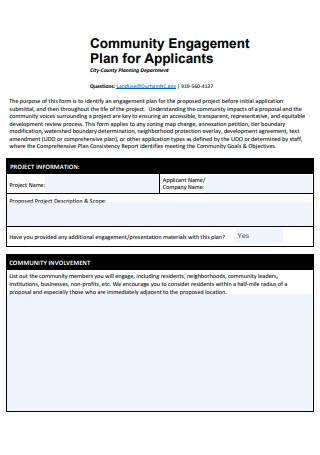
Community Engagement Plan For Applicants
download now -

Outreach and Engagement Plan
download now -
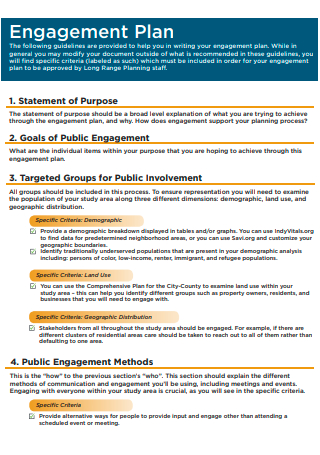
Engagement Plan Template
download now -
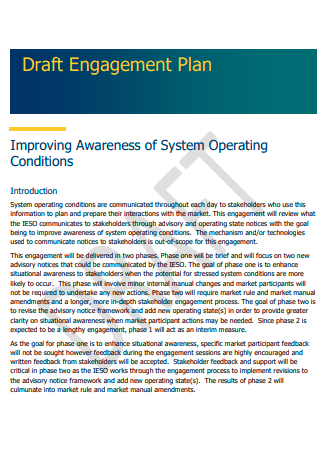
Draft Engagement Plan
download now -
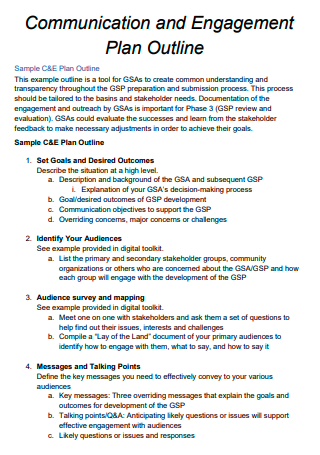
Communication and Engagement Plan Outline
download now -
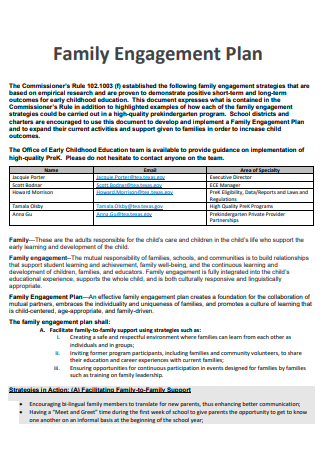
Family Engagement Plan
download now -

Patient Engagement Plan
download now -

Stakeholder Engagement and Communication Plan
download now -
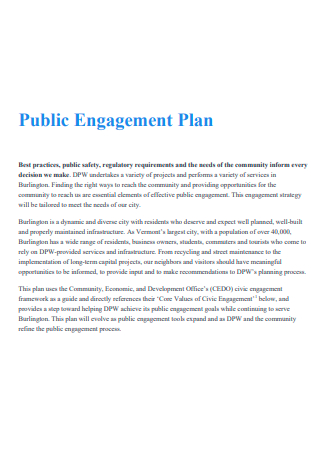
Public Engagement Plan
download now -
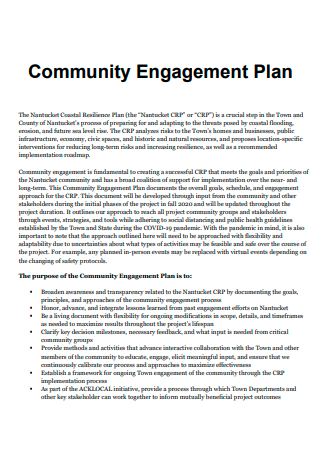
Community Engagement Plan
download now -
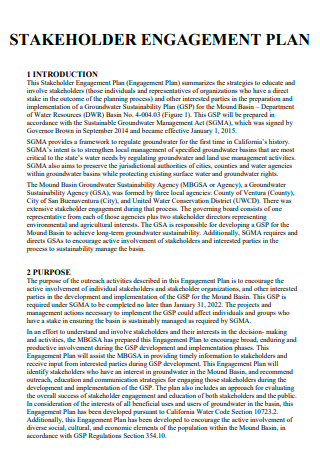
Stakeholder Engagement Plan
download now -
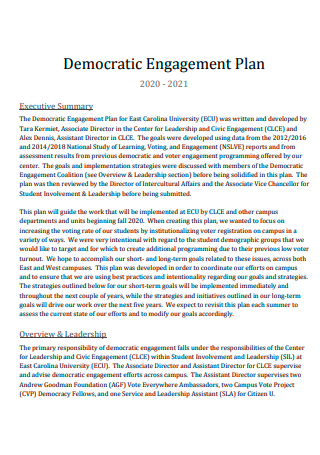
Democratic Engagement Plan
download now -
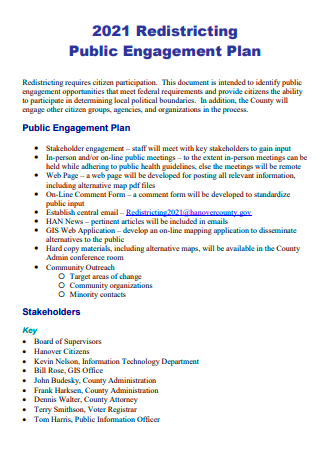
Redistricting Public Engagement Plan
download now -
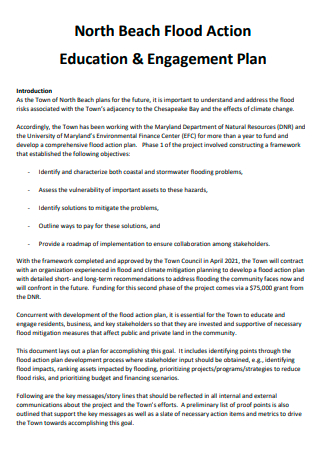
Flood Action Education and Engagement Plan
download now -
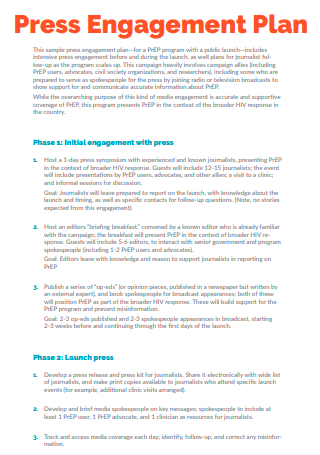
Press Engagement Plan
download now -
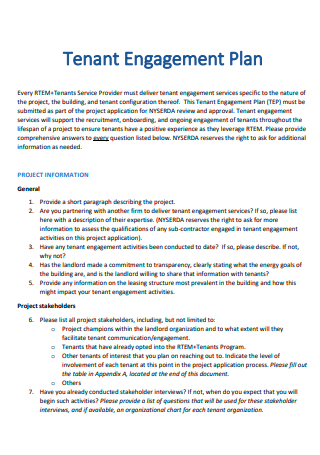
Tenant Engagement Plan
download now -

Equitable Engagement Plan
download now -
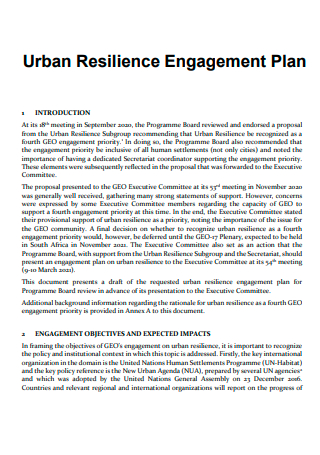
Urban Resilience Engagement Plan
download now -
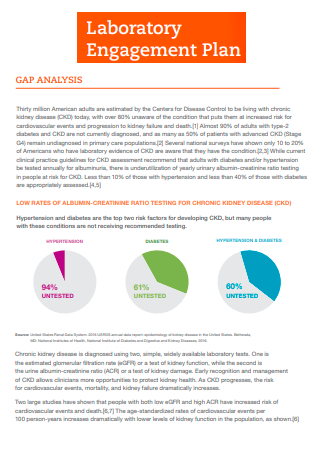
Laboratory Engagement Plan
download now -
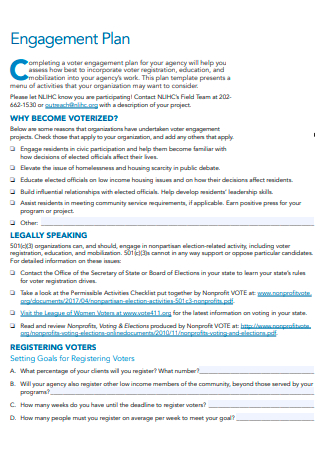
Basic Engagement Plan
download now -
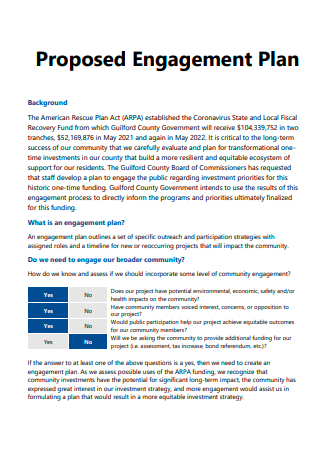
Proposed Engagement Plan
download now
FREE Engagement Plan s to Download
20+ SAMPLE Engagement Plan
What Is an Engagement Plan?
Why Are Engagement Plans Needed?
General Engagement Plan Inclusions
How to Write an Engagement Plan
FAQs
Why do strategic engagement plans fail?
What makes a public engagement plan?
What are the three Cs of an employee engagement plan?
What Is an Engagement Plan?
An engagement plan contains all the ideas you need to know about doing a certain job, project, or event. But what makes it different from any project plan is how an engagement plan focuses more on how to keep every stakeholder or member engaged in doing the suggested tasks and even when to do them. Engagement plans do more than just persuading people to be driven in achieving goals because these documents thoroughly analyze ways in a series of feasible steps.
Why Are Engagement Plans Needed?
An engagement plan is quite extensive. Although it concerns people on how to be engaged to achieve something, what the engagement plan is for is where it often varies. There are all sorts of engagement plans such as stakeholder engagement plans, customer engagement plans, strategic engagement plans, communication engagement plans, community engagement plans, and more. But the question is, why are these plans needed? Here is an introduction to the importance of engagement plans:
Engages Different People with Extensive Goals
Engagement plans benefit many people whether they are employees, customers, students, or stakeholders. How to keep them engaged with whatever they do will help them accomplish their goals. That is if they follow according to the engagement plan. More so, engagement plans may have varying goals such as boosting employee engagement, improving customer satisfaction, and other concerns. And you will surely find an engagement plan important if you want to see the difference between people who just work and people who are engaged with their work.
Detailed Strategic Plan
Bear in mind that an engagement plan is a thorough strategic plan too. It shows you the clear visual and steps on what processes to take before even working out your engagement plan’s purpose. So the moment you forget or question certain aspects of the plan, simply refer to the document and you will be updated about the engagement plan anytime. And it is much better to put the plan into writing than to simply put it inside your head. Otherwise, some tiny details may be overlooked and would drive the plan to fail.
Gives Reasons Why a New Project Should Be Embraced
An engagement plan is not a mere instruction book. Like an explanation letter, there is also some room to give out reasons why a certain project must be carried out in the first place. And those reasons are not for naught because they increase the likelihood of the people embracing the engagement plan and its purpose. Hence, take this opportunity to explain and compel people to follow the objectives, just as how engagement plans must be.
Effective Business Communication
Expect a thorough communication plan in the engagement plan. Often used for business communication, the engagement plan tries to connect everyone involved in a project so everyone is in the loop. Moreover, it is through communication that project team members know about how to achieve the plan successfully. So be sure that a systematic plan is organized and delivered to the rest of the team from the project expectations, risks, down to the key business decisions.
Convenient Way of Ensuring a Productive Progress
One thing you can appreciate about engagement plans is their ability to help you take control of a project’s progress. Engagement plans aim to make stakeholders productive. And you can expect a productive outcome in your project’s progress report when engaged individuals are working on the plan. So be sure the engagement plan has its way to manage expectations until everyone gets motivated to complete the project and gets a taste of success in the end.
General Engagement Plan Inclusions
Now that you have enough coverage about what an engagement plan means and why it is important, it is time to familiarize what makes an engagement plan. Although engagement plans differ in function and components, there is a common format for what they contain. And the standard inclusions of an engagement plan are the following:
How to Write an Engagement Plan
Creating the engagement plan would run seamlessly when you are guided every step of the way. In this segment, learn about the basic steps that will guarantee you an effective engagement plan for your next project:
Step 1: Jumpstart the Pre-Planning Stage
Probably the most crucial stage of formulating an engagement plan is the pre-planning process. Be sure to highlight the need to involve people because by keeping people involved, having them follow the engagement plan will run seamlessly. So in the initial part of strategic planning, recognize the stakeholders and meet with them ahead. That way, they would be aware that an upcoming engagement plan is in the works. Also, you can already have ideas on how to configure the necessary aspects of an engagement plan through analysis.
Step 2: Use a Sample Engagement Plan
Don’t take the free sample engagement plan templates enlisted above this article for granted. Choose and edit your preferred template whether you aim to create a stakeholder engagement plan, strategic engagement plan, public engagement plan, external engagement plan, internal engagement plan, employee engagement plan, volunteer engagement plan, and lots more. Be sure to fit your engagement plan’s purpose with the sample as well.
Step 3: Label the Engagement Plan’s Inclusions
Remember the background information down to the assessment report? Make sure to add the basic inclusions of an engagement plan in your document. Remember that you are allowed to configure the elements of the plan however you want. You can even add more elements to the plan as long as they are still relevant to the project.
Step 4: Keep It Detailed but Straightforward
Writing the complete details of an engagement plan is highly recommended. But not to the point where you are almost writing a long detailed letter already. The key is to get rid of flowery words and unnecessary statements that only make your message less effective. Instead, be more direct to the point. Short yet specific instructions in a plan are much more appreciated rather than making it complicated.
Step 5: Mind Your Audience
Don’t forget to mind your tone in writing, especially when considering your audience is critical in the engagement plan writing process. If you are to connect with people to keep them engaged, then you have to watch your tone or your audience may refuse to follow. Conduct audience analysis and you will eventually know what level of writing works for your engagement plan. Once you are confident with the results, submit your work.
FAQs
Why do strategic engagement plans fail?
According to Cascade, strategic engagement plans often fail due to lacking team buy-in, setting vague objectives, failing to account for business, losing momentum, being unwilling to iterate, lacking alignment, and failing to celebrate milestones or successes.
What makes a public engagement plan?
Public engagement plans usually have the following inclusions: the scope of the project, limitations, key stakeholders, objectives, targets or metrics, timeline chart with milestones, channels, promotional strategy, alternative plans, and a post-engagement plan.
What are the three Cs of an employee engagement plan?
The three Cs of an employee engagement plan are career, care, and competence.
Always keep in mind that if you want to drive engagement into your next business, project, or any event, you need to involve the stakeholders and people in the process to make it successful. And that is where there is a need to formulate a smart business document mainly for keeping people driven to make a project happen. Download and optimize a sample engagement plan template for your next creation now!
